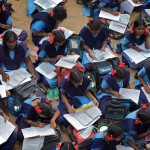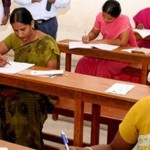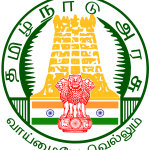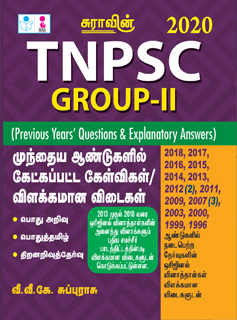
1. Consider the following statements :
I. The nationalist movement and
Hindu-Muslim unity took giant steps forward after World War I
II. The entire country resounded to the cry of “Hindu-Muslims Ki Jai”.
Select the correct answer :
A) I only is correct
B) II only is correct
C) I and II are correct
D) I and II are wrong
Explanation : Ans : (C)
I. The First world war had a major impact on the freedom movement.
Besant and Tilak also played an important role in bringing the congress and the Muslim League together. It is popularly known as the Congress-League Pact or the Lucknow Pact.
In this Pact, Congress agreed to separate electorates for Muslims in provincial council elections and for preferences in their favour in all provinces except the Punjab and Bengal, where some ground was given to the Hindu and Sikh minorities. This Pact paved the way for Hindu-Muslim cooperation in the Khilafat movement and Gandhi’s Non-Cooperation movement.
II. The entire country resounded to the cry of “Hindu – Muslims Ki Jai” during Nationalist and Khilafat movements.
2. The National Commission for women was set up in the year
A) 1991 B) 1992
C) 1993 D) 1994
Explanation : Ans : (B)
The National Commission for Women is a statutory body established in January 1992 under the National Commission for Women Act, 1990.
The Mandate of this body includes :
To review the Constitutional and Legal safeguards for women.
Recommend remedial legislative measures.
Facilitate redressal of grievances.
Advise the Government on all Policy matters affecting women.
Functions :
Investigate and examine all matters relating to the safeguards provided for women under the Constitution and other laws.
Present reports to Central government on work done towards these safeguards.
Make recommendations for effective implementation of such safeguards to Union or State governments.
Take up cases of violation of law against women to appropriate authorities.
Look into complaints and take suo moto action over them.
Participate in Planning process of socio-economic development of women.
3. Which year has a special significance in Indian Economy, that has brought about a significant changes in the economic policies.
A) 1981 B) 1991
C) 2000 D) 2010
Explanation : Ans : (B)
The New Economic Liberalisation Policy was launched in India in July 1991. LPG, ie Liberalisation, Privatisation and Globalisation, are the three steps in NEP.
The three pillars of New Economic Policy are :
Privatization : Privatization means transfer of ownership and management of enterprises from public sector to private sector.
Denationalization, Disinvestment and Opening exclusive public sector enterprises to private sector are the gateways to privatization.
Liberalization : Liberalization refers to removal of relaxation of governmental restrictions in all stages in industry.
Delicensing, decontrol, deregulation, incentives and greater role for financial institutions are the various facets of liberalization.
Globalization : Globalization is the process of rapid integration (or) interconnection between countries.
MNCs are playing major role in globalisation process.
More and more goods and services, investments and technology are moving between countries.
4. Which is the largest rivers of South India ?
A) Godavari B) Mahanadi
C) Narmada D) Tapti
Explanation : Ans : (A)
The Godavari (1,465 km) : It is the largest Peninsular river system. It is also called the Dakshin Ganga. It rises in the Nasik district of Maharashtra and discharges its water into the Bay of Bengal. Its tributaries run through the states of Maharashtra, Madhya Pradesh, Chhattisgarh, Odisha and Andhra Pradesh. The Penganga, the Indravati, the Pranhita, and the Manjra are its principal tributaries. The Godavari is subjected to heavy floods in its lower reaches to the south of Polavaram, where it forms a picturesque gorge. The river after Rajamundri splits into several branches forming a large delta.
The Mahanadi (900 km) : It rises near Sihawa in Raipur district of Chhatisgarh and runs through Odisha to discharge its water into the Bay of Bengal. Fifty three per cent of the drainage basin of this river lies in Madhya Pradesh and Chhattisgarh while 47 per cent lies in Odisha.
The Narmada (1,312 km) : It originates on the western flank of the Amarkantak plateau at a height of about 1,057 m. Flowing in a rift valley between the Satpura in the south and the Vindhyan range in the north, it forms a picturesque gorge in marble rocks and Dhuandhar waterfall near Jabalpur. It meets the Arabian sea south of Bharuch, forming a broad 27 km long estuary. The Sardar Sarovar project has been constructed on this river.
The Tapti (724 km) : It is the other important westward flowing river. It originates from Multai in the Betual district of Madhya Pradesh. Nearly 79 per cent of its basin lies in Maharashtra, 15 per cent in Madhya Pradesh and the remaining 6 per cent in Gujarat.
5. Which of the following is most abundant in earth’s crust ?
A) C. Carbon
B) Si. Silicon
C) Ge. Germonium
D) Sn. Tin
Explanation : Ans : (B)
The group 14 (IV A) elements – carbon, silicon, germanium, tin and lead are especially important both in industry and in living organisms.
Carbon is an essential constituent of the molecules on which life is based.
Silicon is the second most abundant elements in the earth’s crust.
Both silicon and germanium are used in making solid-state electronic devices.
Tin and lead have been known and used since ancient times.






